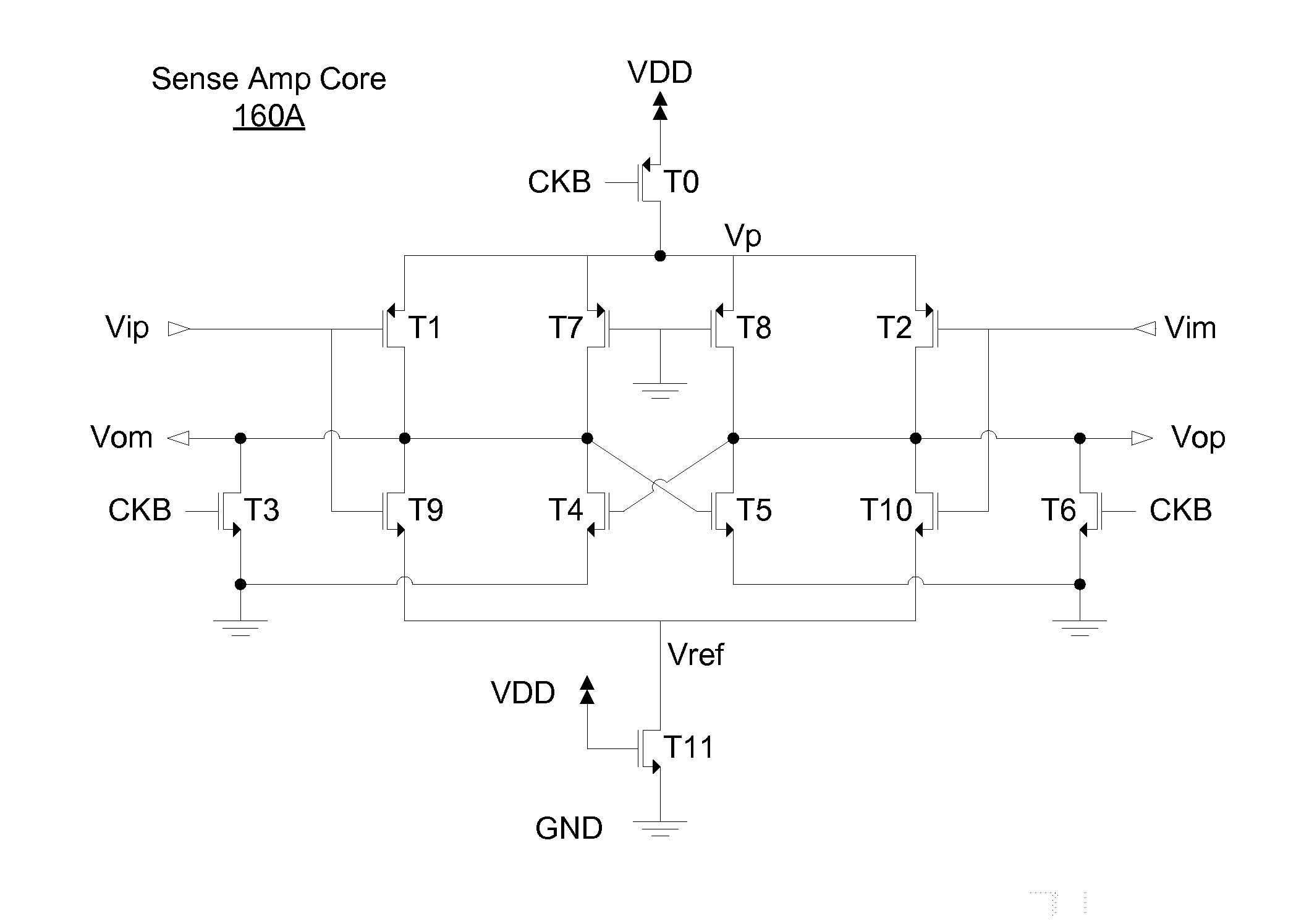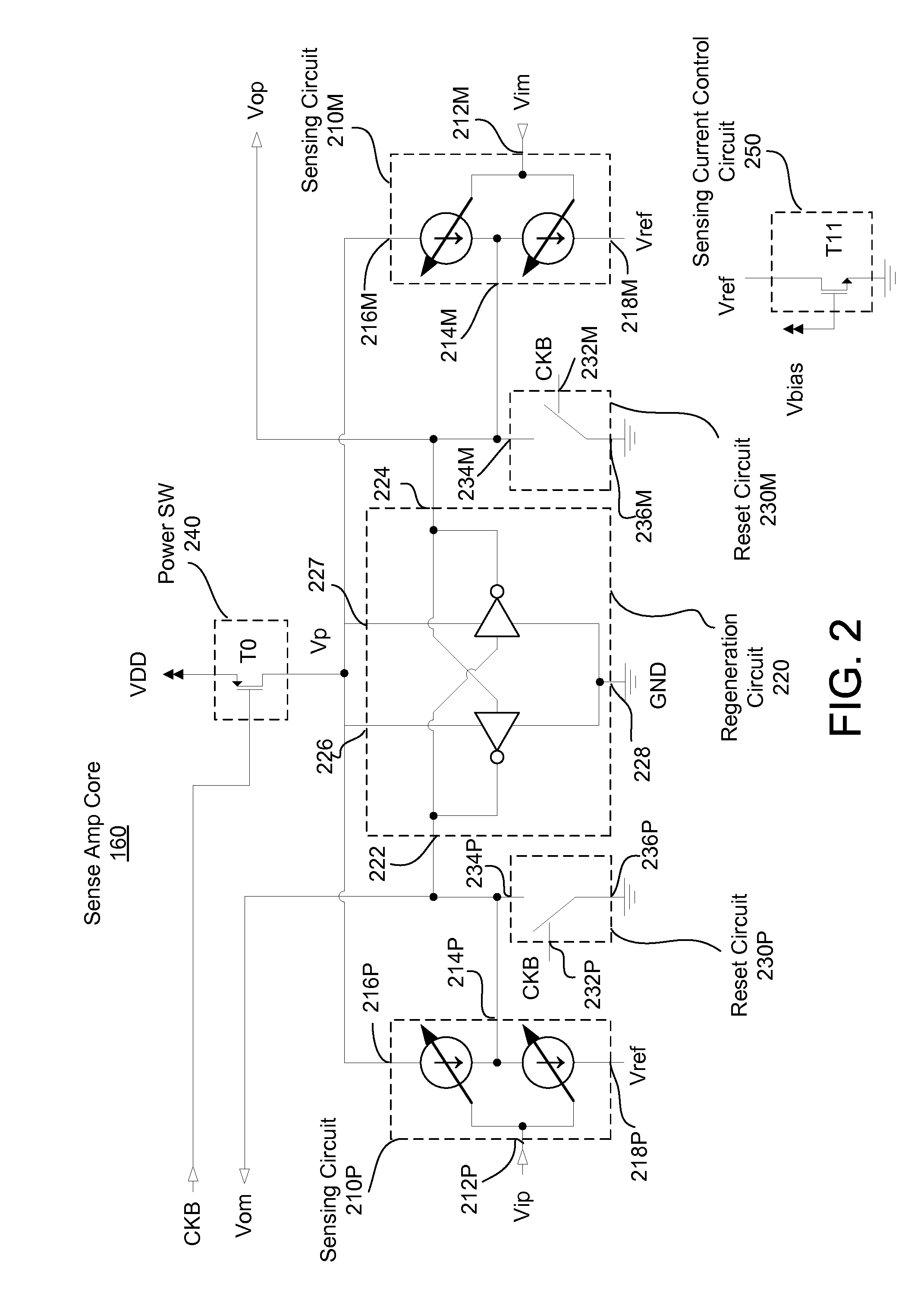Method and apparatus for implementing wide data range and wide common-mode receivers
a receiver and data range technology, applied in the field of sense amplifiers, can solve the problems of increased overall area, insufficient voltage headroom of receiver structures, and increased implementation costs
- Summary
- Abstract
- Description
- Claims
- Application Information
AI Technical Summary
Benefits of technology
Problems solved by technology
Method used
Image
Examples
example circuit
Architecture
[0050]FIG. 1 is a diagram illustrating a chip-to-chip interface between two chips, according to one embodiment. Chip A 110 includes a transmitter (TX) 115 to transmit signals over an interconnect 130 to chip B 120 with a receiver (RX) 125. The TX 115 generates TX output signal 117 at an output of the transmitter 115 to drive the interconnect 130 and the RX 125. However, RX input signal 119 received at an input of the receiver 125 is degraded, because of non-idealities such as (i) parasitics in the interconnect, off chip components, bonding wires, and bonding pads, (ii) impedance mismatch, (ii) cross talks, and (iv) external noise. The receiver 125 employs a sense amplifier 150 as a front end of the receiver 125, and amplifies the input signal 119 to a proper level. The amplified signal enables logic operation or process to be performed on and / or off the chip B 120.
[0051]The sense amplifier 150 includes, among other components, a sense amplifier core circuit 160. The sens...
example configuration
and Operation of Sense Amplifier
[0074]Referring to FIG. 5, illustrated is an example embodiment of a sense amplifier core circuit 160A. The configuration and operation of the embodiment of FIG. 5 is substantially the same as the embodiment of FIG. 2 except that the positive input sensing circuit 210P is replaced with the sensing circuit 210A, the negative input sensing circuit 210N is replaced with the sensing circuit 210A, and the regeneration control bias Vb is coupled to GND.
[0075]The sensing circuit 210A includes the NMOS transistor T1 and the PMOS transistor T9, where the bias node Vbias of the NMOS transistor T11 is coupled to VDD. Similarly, the sensing circuit 210A comprises a NMOS transistor T2 and the PMOS transistor T10. In addition, the back-to-back pseudo inverters in the regeneration circuit 220B are employed as the regeneration circuit 220 in FIG. 2.
[0076]FIG. 6 is a timing diagram illustrating an example operation of the sense amplifier in FIG. 5, according to one em...
PUM
 Login to View More
Login to View More Abstract
Description
Claims
Application Information
 Login to View More
Login to View More - R&D
- Intellectual Property
- Life Sciences
- Materials
- Tech Scout
- Unparalleled Data Quality
- Higher Quality Content
- 60% Fewer Hallucinations
Browse by: Latest US Patents, China's latest patents, Technical Efficacy Thesaurus, Application Domain, Technology Topic, Popular Technical Reports.
© 2025 PatSnap. All rights reserved.Legal|Privacy policy|Modern Slavery Act Transparency Statement|Sitemap|About US| Contact US: help@patsnap.com



